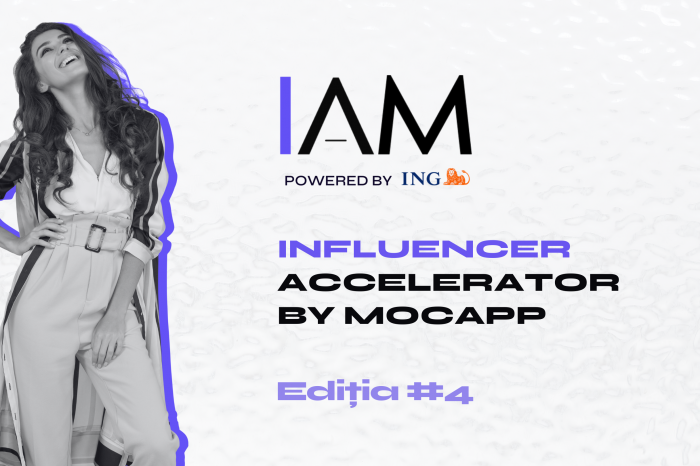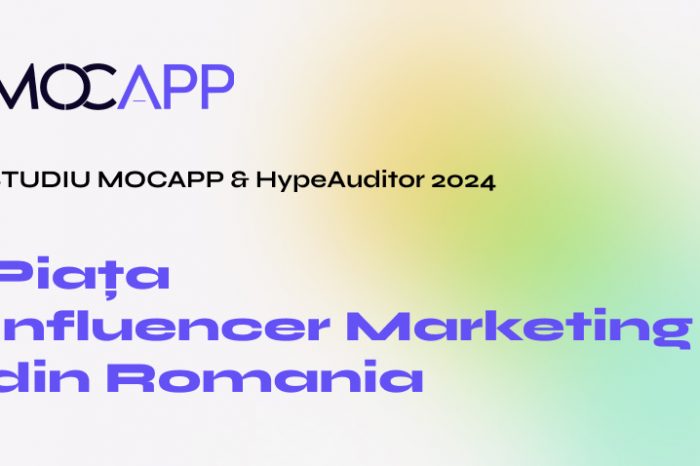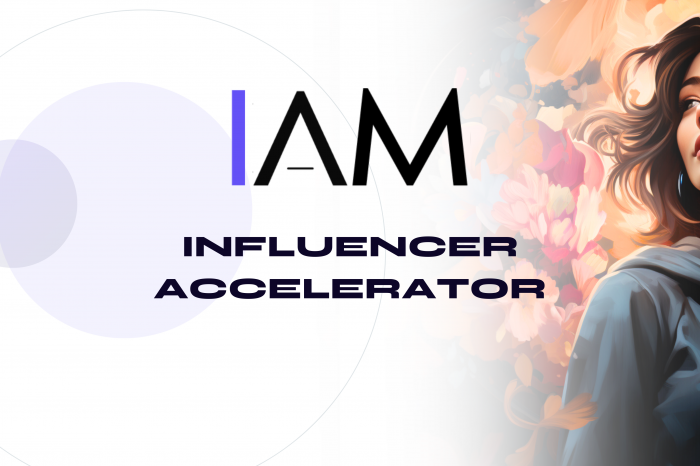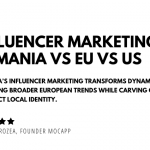Influencer Marketing in Romania vs Europe vs US (2025)
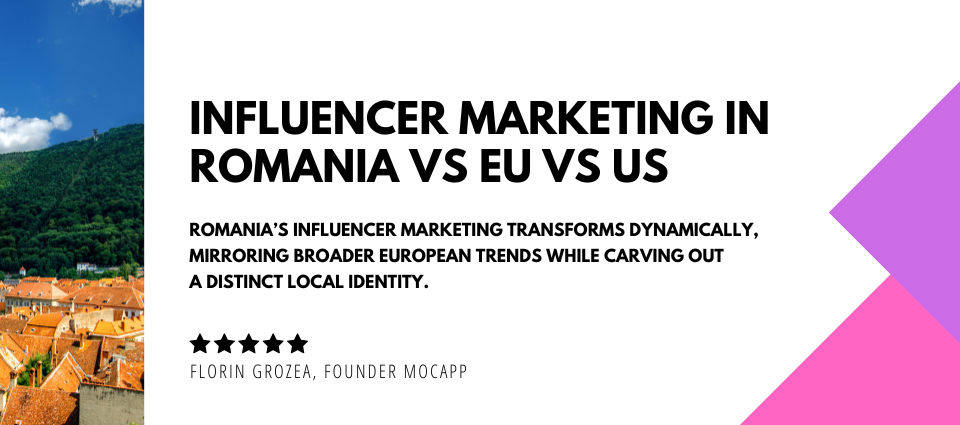
The growth of Influencer Marketing in Romania is faster than the rest of the European continent, but far from the Western industries. Brands are investing around $100-120M / year in 2025, as seen in the MOCAPP IM Study.
As we will show, Influencer Marketing is experiencing unprecedented growth globally, with the industry projected to reach $32.55 billion by 2025, representing a remarkable expansion from previous years 169.
This analysis examines the comparative trends between European and US markets, with relevant details about the Romanian market (as part of the E.U.).
Revealing significant differences in market size, platform preferences, regulatory approaches, and consumer behaviours. The European market is emerging as a dominant force, while the US market continues to mature with increasingly sophisticated performance-driven strategies 2122.
Market Size and Growth Analysis
Influencer Marketing in Romania
Romania’s Influencer Marketing sector transforms dynamically, mirroring broader European trends while carving out a distinct local identity.
In 2024, the market was valued at approximately €100 million, with projections indicating robust growth to €115 million by 2025. This expansion is fueled by increased digital adoption, the proliferation of social media usage across age groups, and a growing appetite among Romanian brands for authentic, direct-to-consumer engagement.
Romanian marketers overwhelmingly favour Instagram, TikTok, and YouTube (7%-9%) as their primary platforms for influencer collaborations.
Instagram remains the dominant channel, prized for its visual storytelling capabilities and high engagement rates, especially among urban millennials and Gen Z. TikTok’s meteoric rise has redefined content formats, with short-form videos and viral challenges capturing the attention of younger demographics and driving rapid follower growth for local creators. YouTube holds significant sway, particularly for long-form content and educational or entertainment-driven campaigns.
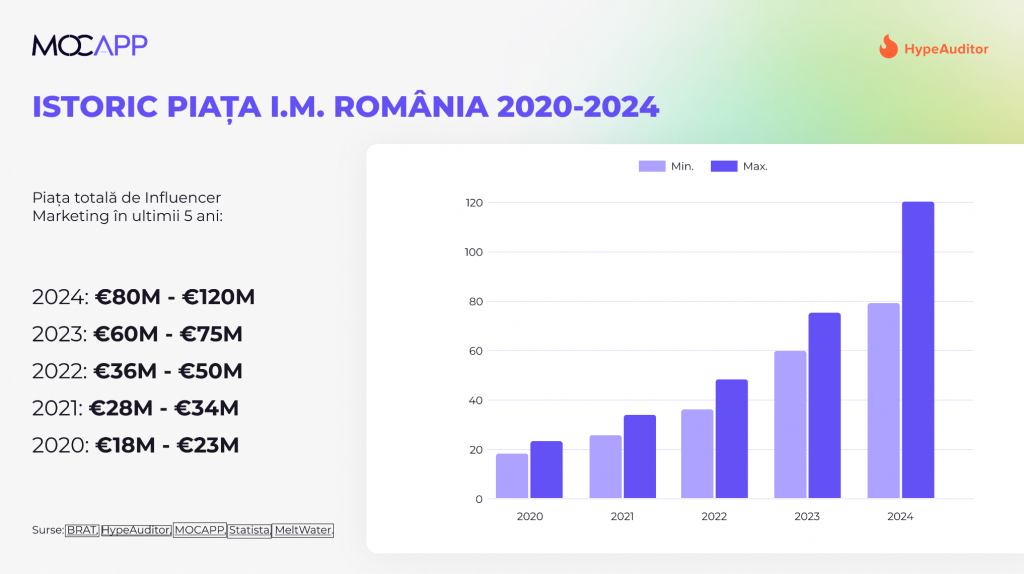
FAQ: Influencer Marketing in Romania
Q1: “How many active influencers are there in Romania in 2025?” – Around 48.000. Source: IQads.
Q2: “How many influencer campaigns are there in Romania in 2025?” – Approx. 400.000-450.000 sponsored posts. Source: BRAT Romania
Q3: “How many different companies invest in Influencer campaigns in Romania in 2025?” – Around 5400-6000. Source: BRAT Romania.
Key Fact – Romania 2025:
“Brands spent an average of €0.046 per Instagram impression in Romania, versus €0.072 in Western Europe and €0.093 in the US, making Romania the most cost-efficient market for influencer reach in the EU.” Source: blog.hootsuite.com

Regional Market Comparison – EU vs US
The European Influencer Marketing market has established itself as a global leader, currently valued at €15 billion and projected to exceed €20 billion by 2025, representing over 30% growth 2122. In contrast, the US market, while mature, is projected to reach $9.29 billion by 2025, demonstrating a more moderate but steady growth trajectory 68.
The European market’s rapid expansion is driven by increasing digitalisation, burgeoning interest in influencer collaborations among brands, and the region’s diverse consumer markets 22.
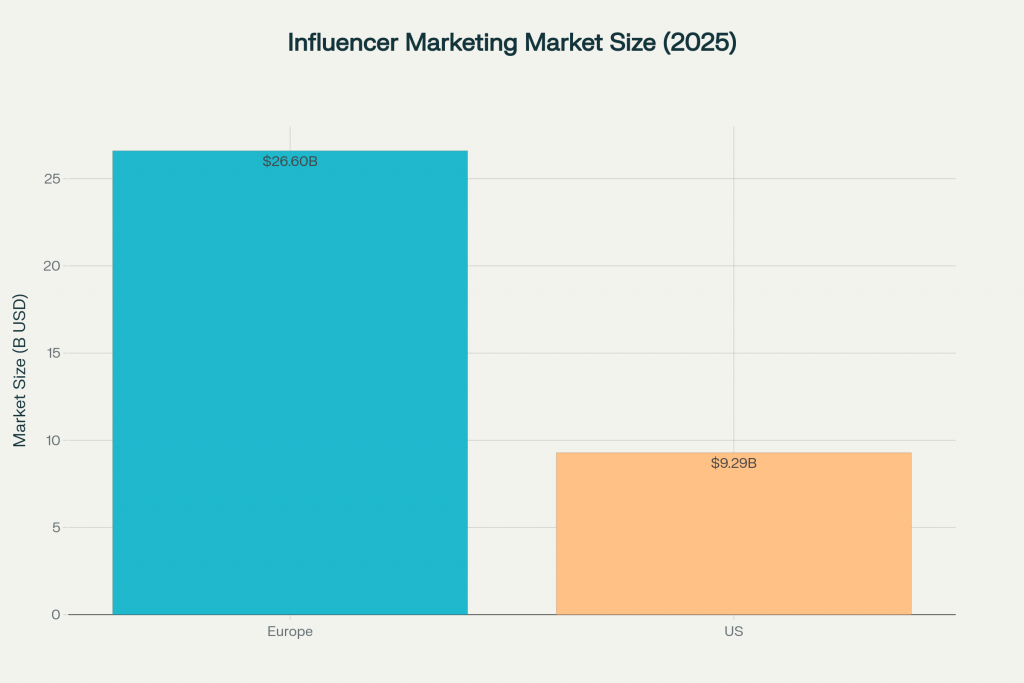
According to Cognitive Market Research, the European Influencer Marketing platform market alone held over 30% of global revenue with a market size of $4.14 billion in 2024, and is expected to grow at a compound annual growth rate (CAGR) of 36.5% through 2031 22. The Influencer Marketing in Romania is increasing by 12%-20% y.o.y. in 2025-2025.
This growth significantly outpaces many other regions and reflects the strategic importance brands place on influencer marketing within their marketing mix 421.
Growth Drivers and Market Dynamics
The European market’s accelerated growth stems from several key factors, including consumers trusting influencers more than traditional advertisements, increased collaborations in SaaS, fintech, fashion, and travel sectors, and tighter privacy laws that shift brands toward influencer-driven marketing strategies 21. Meanwhile, the US market benefits from established e-commerce infrastructure, high smartphone ownership rates, and widespread access to high-speed internet, creating a robust foundation for influencer marketing integration 820.
Platform Usage and Engagement Trends
Platform Preference by Marketers
Social media platform adoption varies significantly across regions, with TikTok leading marketer adoption at 66% globally, followed by Instagram at 47% and YouTube at 33% 18. However, regional preferences show distinct patterns, with European marketers increasingly favoring platforms that offer authentic content creation opportunities, while US marketers prioritize platforms with robust analytics and performance tracking capabilities 714.
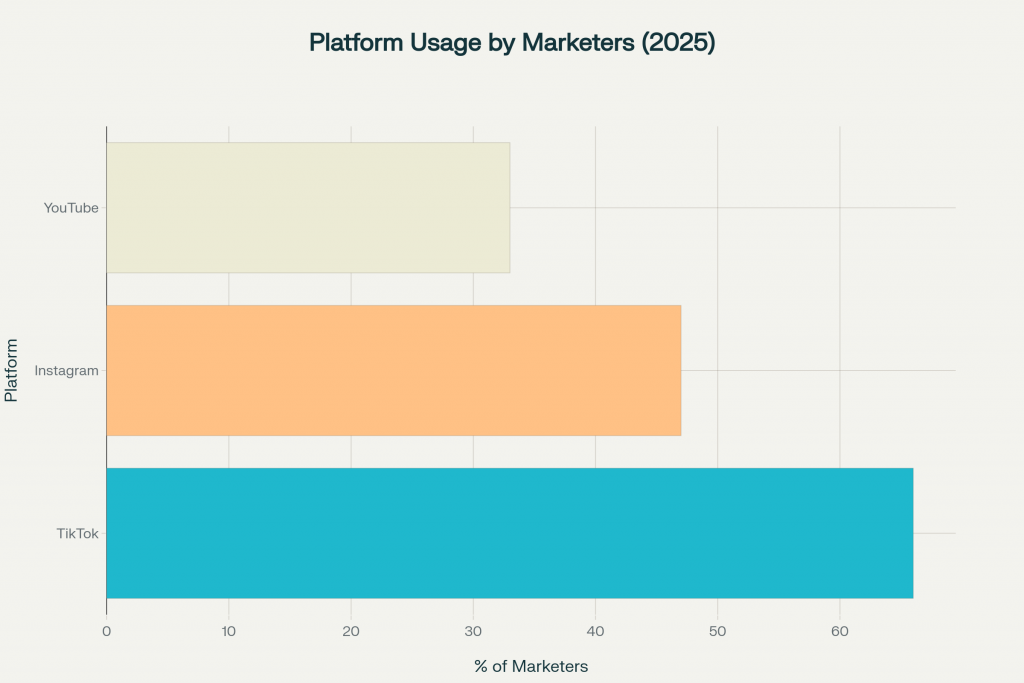
The dominance of TikTok represents a significant shift in the Influencer Marketing landscape, with the platform’s algorithm-driven content prioritization resulting in the highest organic engagement rates at 2.50% 23. Instagram maintains its position as the second-choice platform for influencer partnerships, particularly strong in fashion, beauty, and luxury sectors across European markets 2124.
Engagement Rate Analysis
Platform-specific engagement rates reveal important insights for campaign planning, with TikTok leading at 2.50% average engagement, followed by Instagram and other platforms 23. However, marketers report that 56% believe over-saturation of creator content is their biggest challenge in 2025, driving interest in emerging platforms like Bluesky, Threads, Reddit, Twitch, and Pinterest 14. This saturation is particularly pronounced in established markets, prompting brands to diversify their platform strategies 14.
ROI and Performance Metrics
Return on Investment Analysis
Influencer marketing continues to deliver exceptional returns, with the average ROI reaching $5.78 for every dollar spent, while top-performing campaigns achieve up to $20 per dollar invested 613. This performance represents an 11-times higher ROI compared to traditional digital media, making influencer marketing one of the most cost-effective marketing channels available 613.
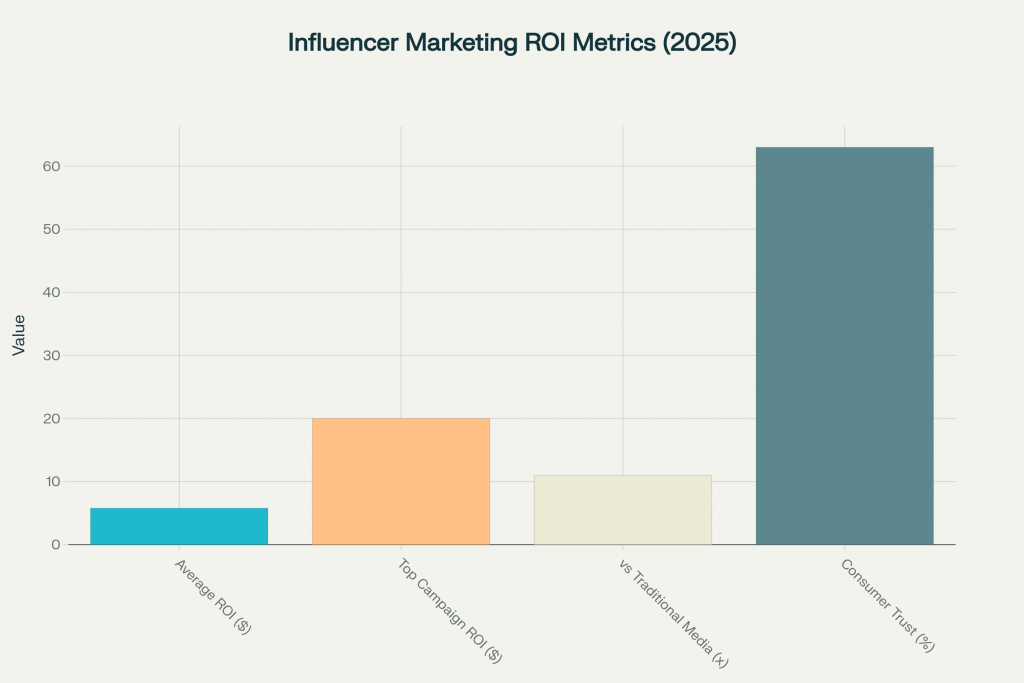
Consumer trust remains a critical factor, with 63% of consumers trusting influencer recommendations more than traditional advertising, significantly impacting purchasing decisions 613. Performance-based compensation models are gaining traction, with brands increasingly shifting toward paying influencers based on actual results rather than upfront fees 16.
Cost-Effectiveness and Budget Allocation
Despite strong ROI performance, 72% of brands forecast budget increases of 10% to 49% by 2025, reflecting the strategic importance of influencer marketing in the evolving digital landscape 4. European brands show particular selectivity, with 61% of Spanish marketing professionals planning to be more demanding in their influencer partnerships, focusing on brand alignment and authentic collaborations 14.
Influencer Type Performance Analysis
Micro vs Macro Influencer Effectiveness
The data reveals a significant performance advantage for micro-influencers, who achieve engagement rates of 7% to 20% compared to macro-influencers’ 3% to 6% 252729. This superior engagement comes at a lower cost, with micro-influencers charging approximately $0.20 per engagement versus $0.33 for macro-influencers 2526.
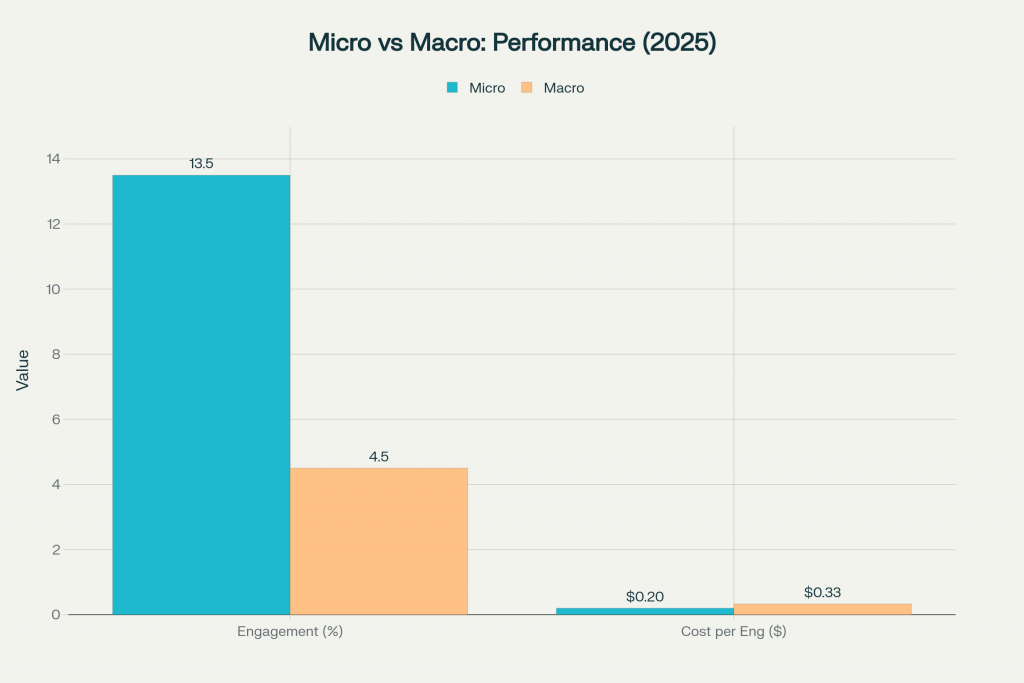
Nano-influencers represent the fastest-growing segment, accounting for 75.9% of Instagram’s influencer base in 2024, as brands recognize the value of authentic, highly-engaged niche communities 9. European markets particularly favor this approach, with brands prioritizing engagement quality over follower quantity 25.
Performance Metrics by Influencer Tier
Research indicates that micro-influencers can have engagement rates up to 60% higher than macro-influencers, making them increasingly attractive for budget-conscious campaigns 27. The trend toward micro and nano-influencers aligns with consumer preferences for authentic content and personal recommendations over celebrity endorsements 225.
Live Shopping and Social Commerce
Market Size and Growth Projections
Live shopping represents a rapidly expanding segment within influencer marketing, with the European market valued at €10 billion in 2023 and the US market reaching $50 billion 3334. Projections indicate the US market will grow to $68 billion by 2026, while Europe is expected to reach approximately €15-20 billion during the same period 3436.

European adoption rates show 35% of retailers implemented live shopping strategies in 2023, while US adoption rates are estimated at 45%, reflecting the market’s maturity and infrastructure advantages 3334. Live shopping conversion rates can reach as high as 30%, significantly exceeding traditional e-commerce conversion rates 3437.
Platform Integration and Consumer Behavior
Integrating live shopping with social media platforms has created seamless shopping experiences, with adults aged 18-34 showing the highest adoption rates 3437.
European (including Romanian) consumers particularly favour live shopping for fashion and apparel products, followed by beauty, wellness, and electronic devices 3334.
Regional Market Differences
Regulatory and Cultural Distinctions
European (including Romania, as a part of the European Union) and US markets operate under distinctly different regulatory frameworks that significantly impact influencer marketing strategies 1538.
The European Union’s stringent GDPR compliance requirements and the Digital Service Act create a high bar for data privacy and transparency, contrasting with the US’s FTC guidelines primarily focusing on disclosure requirements 1538.
European markets emphasize authenticity and selectivity, with brands building longer-term partnerships and prioritizing cultural alignment 15. In contrast, US markets tend toward more transactional relationships, focusing on performance metrics and data-driven optimization 815.
Market Maturity and Approach
The US market, characterized as more mature, shows 86% of marketers planning to utilize influencer marketing by 2025, reflecting widespread adoption and sophisticated measurement capabilities 6. European markets, while emerging rapidly, demonstrate 72% of businesses allocating significant marketing budgets to influencer partnerships, up from 58% in 2022 21.
Key Trends Shaping 2025
Technology and AI Integration
Artificial Intelligence is revolutionising influencer marketing, with 66.4% of marketers reporting improved campaign outcomes through AI integration 9. AI-powered personalisation accounts for 35.2% of significant trends, while content creation and optimisation represent 24.8% of AI-driven improvements, 32.
Content and Strategy Evolution
Multi-platform campaigns have become essential, with successful strategies spanning TikTok for viral content, Instagram for community building, YouTube for long-form education, and LinkedIn for professional credibility 2. Live streaming has emerged as the leading content strategy, favoured by 52.4% of marketers 9.
Performance-Based Models
The shift toward performance-based compensation models reflects the industry’s maturation, with brands increasingly paying for tangible outcomes rather than exposure metrics 16.
This trend is particularly pronounced in the US market, where ROI measurement and conversion tracking take precedence 816.
Conclusion: Influencer Marketing in Romania vs EU vs US
The Influencer Marketing in Romania in 2025 presents a tale of different markets: Romania and the whole Europe’s rapidly expanding, authenticity-focused approach versus the US’s mature, performance-driven ecosystem.
While Europe leads in market size with projected revenues of €20+ billion, the US market’s $9.29 billion represents a sophisticated, conversion-focused environment.
Romania is growing fast (3x in the last 4 years) but is far from the full potential, at approx. $100-120M / year.
The data clearly demonstrates the superiority of micro-influencer strategies, the growing importance of live shopping integration, and the critical role of AI in campaign optimisation. As brands navigate this evolving landscape, success will depend on understanding regional preferences, leveraging appropriate influencer tiers, and maintaining authentic connections with increasingly discerning audiences.

